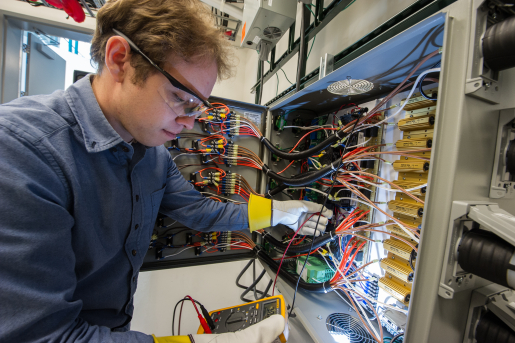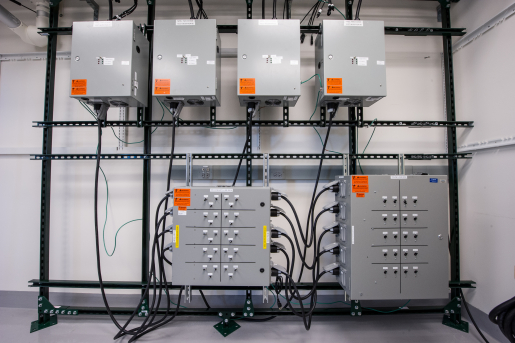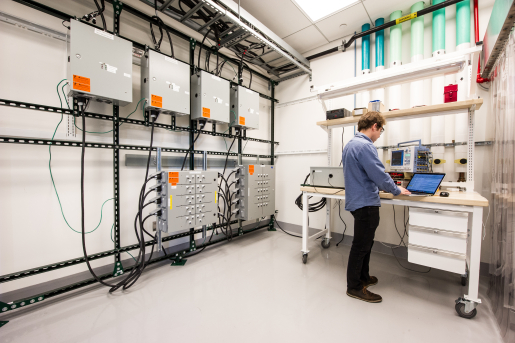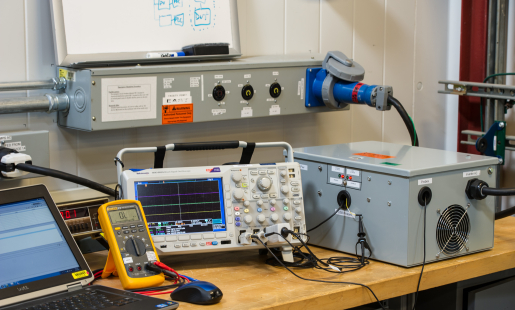Power electronics are essential to the safe and efficient operation of solar PV systems, serving as a critical gateway between solar and the grid.
Solar Energy Technologies Office
May 9, 2018Power electronics are essential to the safe and efficient operation of solar photovoltaic (PV) systems, serving as a critical gateway between solar and the grid. Innovations in power electronics can improve PV system functionality and enhance PV system and grid control capabilities, leading to longer PV system lifetimes and lower costs. However, the typical lifetime of these devices is only 10 years, requiring customers to replace them long before the panels need to be replaced. Extending the lifetime can have significant advantages to the cost and function of a solar system.
In a PV system, the main power electronics device is the inverter which converts the direct current electricity from solar panels into the alternating current used by the U.S. electric grid. Inverters are made from several component technologies—passive filters, active switches, thermal management, and packaging—that experience wear and tear due to everyday use, faults, and other out of the ordinary occurrences like electromagnetic disturbances. This degrades inverter performance and drastically limits its lifetime, leading to part replacement needs and higher operating costs. Solar panels on the market today can last for 20-30 years and now it’s time for their power electronics counterparts to evolve to help PV systems last even longer.
New projects recently announced by the U.S. Department of Energy Solar Energy Technologies Office are exploring power electronics concepts and device designs for solar that could extend power electronics lifetimes and significantly reduce a solar system's levelized cost of energy (LCOE), helping the solar industry reach $.03 cents per kilowatt-hour by 2030. These projects take a few different approaches to lowering costs and improving reliability:
- Advanced component technologies and novel circuit designs can reduce the number of parts within an inverter, leading to better packaging, fewer parts that can fail and fewer parts that need to be replaced, improved efficiency, and lower equipment costs.
- Modular inverter designs that focus on improving individual components can enhance PV system reliability and extend its operational lifetime in the field. Modular components are interchangable and allow easy replacement. They can be added to an existing inverter to enhance performance, like adding energy storage in the future.
- Wide-band gap semiconductor switches enable inverters to operate at much higher temperatures and less power losses, leading to less power failures and longer system lifetimes in the field.
Utilizing these strategies, projects in the new funding program aim to create inverters that could last for more than 30 years in the field with an efficiency level greater than 99 percent.
So far, power electronics have been used to convert power in PV systems but they have incredible potential to provide new functionalities and additional controls. Inverters can “learn” new skills that support faster and more efficient grid operations. This could potentially help to make solar a flexible and dispachable resource on the grid, empowering grid operators to use solar as a solution for their day-to-day grid management needs.
In the future, solar PV inverters could provide grid services like regulating voltage and frequency, detecting cyber and physical threats to the grid, and controlling power flow from solar and storage systems in order to respond to grid disturbances and power outages with solar resources. These solutions leverage customer-owned solar systems to provide additional value without interrupting normal operations, enhancing the value of energy produced over the lifetime of a PV system—which contributes to lower LCOE—while also enabling the safe and reliable operation of the electric grid.
Over the next three years these projects will work toward extending PV system lifetimes and improving solar’s value on the grid, unlocking new potential for solar resources on the grid and lowering costs for residential, commercial, and utility-scale solar installations.
Learn more about the Power Electronics funding program and the Solar Energy Technologies Office’s system integration subprogram.







